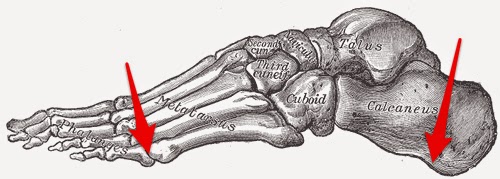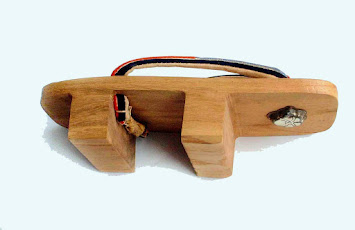 |
| Watson Waggle |
For the longest time, I avoided really waggling the club. Very few professional touring golfers of the modern era do it, with the notable exception of Jason Dufner and a few others. So I never saw much use in it. I was wrong--at least for me. Virtually every sport that uses an implement to hit a ball, such as baseball and tennis, has some sort of waggle in preparation to perform a hitting action. Basketball players dribble the ball at the freethrow line as their waggle. Billiards players "waggle" the cue back-and-forth several times before taking their shots.
A waggle serves several functions, and I have seen it improve my playing firsthand. First, waggling prevents you from starting the swing from a tense, static position; by waggling, you can work tension out of your fingers, arms, and wrists that might have caused you to snatch the club up into an early off-plane condition (had you started from a static address position). Second, it allows you to essentially take several quick "practice swings" (or really "practice takeaways") in succession, so that you can be assured of at least starting the takeaway on-plane, which apart from the setup is the next most important part of the swing. Third, it allows you to practice and ingrain how the club head will arc back to the ball (usually down and from the inside in equal parts, unless you're trying for a fade). Fourth, the waggle helps you establish rhythm and tempo for the shot you're about to hit; the rhythm and tempo of your full swing should match that of your waggle.
My typical waggle procedure: I perform 1/4th of the swing arc several times (essentially a "takeaway" followed by a simulated "impact") using a loose wrist motion, relaxed fingers, and very little arm or shoulder motion (my right elbow bends slightly, left arm moves back slightly, and my left forearm rotates slightly). I watch the arcing of the club head to ensure the club head is tracking back freely and smoothly, up and inside at the same rate and down and outside at the same rate. My waggle ends when the shaft is on my toe line and parallel to the target line, though it might end earlier if I'm, for example, performing a chipping waggle. If the club head seems to "jerk upward" or unintentionally along the incorrect path during the waggle, I loosen the grip and wrists until it arcs smoothly as described above and I can feel the weight of the club head in my fingers.
While waggling in this manner, I observe that the club head is smoothly arcing upward and inward (especially if my intention is to hit a draw), tracing the path I want the club head to travel in the swing, but traveling no further inward than my toe line. At the same time, I ensure that I'm not opening the club face; the leading edge of the club remains parallel to my "spine angle" and remains perpendicular to the swing arc. As the club head is tracking back to the ball to start the next waggle, I then observe the "return arc" or how the club head is approaching the ball from the inside (or perhaps slightly from the outside for a fade); it should track back on the same arc it took when first moving away from the ball. All the while, I may even slightly move my feet, which Tom Watson recommends as a part of his waggle.
The waggle is not only useful for full swings but also chipping, pitching, and bunker shots--especially bunker shots. You'll notice that a lot of touring pros who don't waggle in their full swings make several waggles in greenside bunkers. For chipping, your waggle shouldn't involve any wrist movements; instead, start with straight arms and a flat left wrist; use your body rotation to make the club head arc back to the inside and then through, arcing to the left, all while keeping your left wrist flat.
Naysayers. Now, as you might have guessed, there are the usual bunch of detractors out there when it comes to the waggle in golf. Virtually anything that's considered "fundamental" in golf will have some authority advising you not to do it, and that's true for everything from grip to posture to swing planes to anything really. This is one thing that frustrates amateur golfers so much: For every commonly accepted golfing tenet, there will be the inevitable batch of instructors who say that particular tenet is crap, which causes total confusion in the amateur golfing community, especially in this internet age where a simple Google search is all you need to totally confuse and frustrate yourself. So my advice to you with respect to waggling is the same for any aspect of the golf swing that is argued, both pro and con: Try it out for yourself. It helps me. If it doesn't help you then avoid it. But make sure you give it a fair chance, which is something I never did until recently. I didn't because today's touring pros--with a few exceptions--mostly don't waggle, but I realized I'm not a pro and can benefit from the "swing lube" provided by the waggle. Ben Hogan devoted a significant portion of his famous Five Lessons book to the waggle; that should tell you something.
I begin by gripping lightly. I try to feel the weight of the clubhead with my waggle, which keeps me from squeezing the grip. I square the club to the ball, then pick it up and waggle it back and forth twice to keep my hands tension-free, swinging the clubhead back just outside my right foot and returning it to the ball smoothly.
Tom Watson: Why You Should Waggle
Any beginning golfer not being introduced to the waggle is not a good thing. Rather it is a terrible thing that not a single one of my friend’s instructors apparently see the need for a beginner to address the pressure of beginning a golf swing (full, half, chip, lob, pitch, etc.) from a dead stop. That borders on professional malpractice!
The waggle sets the stage for the swing path and plane. Let’s say you need to hit a draw. Waggle the club on a slightly inside path to set up the inside-out motion you will need to produce the shot. Likewise, you might waggle on a slightly outside path before attempting to fade. Remember, make each waggle an individual action. Tailor your waggle for the shot you are playing.
So you waggle the golf club to loosen your arms, to pace your swing and to practice swinging the golf club on the correct plane. When you waggle the club it’s mostly with your hands, just a little bit of rotation with your arms but your wrists are cocking up and your arms are rotating just a little. You waggle the golf club right back along the plane of the swing.
Hank Haney - Waggle Before You Swing
The waggle is the movements of the club head just prior to making a swing. Sometimes it’s not one waggle but two, enough to allow you to feel the shot. The waggle is accomplishing several different things. Aside from just feeling the path you are going to take the club back on; you are making adjustments to your grip pressure, re-gripping with fingers from your left and right hand. This will let you to get more comfortable making sure your hands are strong and in control. Make sure you are paying attention to the weight of the sweet spot on the club face. That’s where you want to hit the ball.
The Waggle Dance - A Good Start To Your Golf Swing
As Bill McKinney explains in the video the waggle does 5 important things for your golf swing. First, it rehearses you[r] swing path. By moving the club along the proper path you are reminding yourself seconds before you swing where the right path is.
Next, it reminds your wrists how to cock at the top of the swing. A good waggle also reminds your wrists how to release into impact.
The waggle also helps you feel the right amount of tension in your arms and wrists, remember your arms and wrists should be loose and your grip just tight enough to hang onto the club. If you have too much tension you’ll quickly realize it when you waggle and be able to correct it before it ruins a shot.
Lastly, a good waggle gives you some rhythm, and keeps you from stiffening while standing over the ball. As Bill McKinney explains in the video, the rhythm aspect to the waggle is very similar to a baseball player rhythmically moving the bat before each swing. Starting a swing from a stagnant position nearly always results in a jerking motion, it’s just how our muscles work, but if we are already moving we can be incredibly precise and smooth.
Under pressure, the tendency is to freeze over the ball and put a death grip on the club. To combat this, keep some motion in your fingers and feet (right inset). Waggle the club back and forth. If you lock up, your nerves will get you.
Butch Harmon: Best Tips For Driving
Harbinger of the movement of the club head. The waggle reveals how you are ultimately going to deliver the club head. Therefore, the backward motion of the waggle should be up and inward. It should also feel natural; you shouldn't fill like you are fighting the club. If you are straying up and out or up and away, then you've likely got a poor (weak) grip on the club. I like to feel that my grip is slightly on top of the club.

